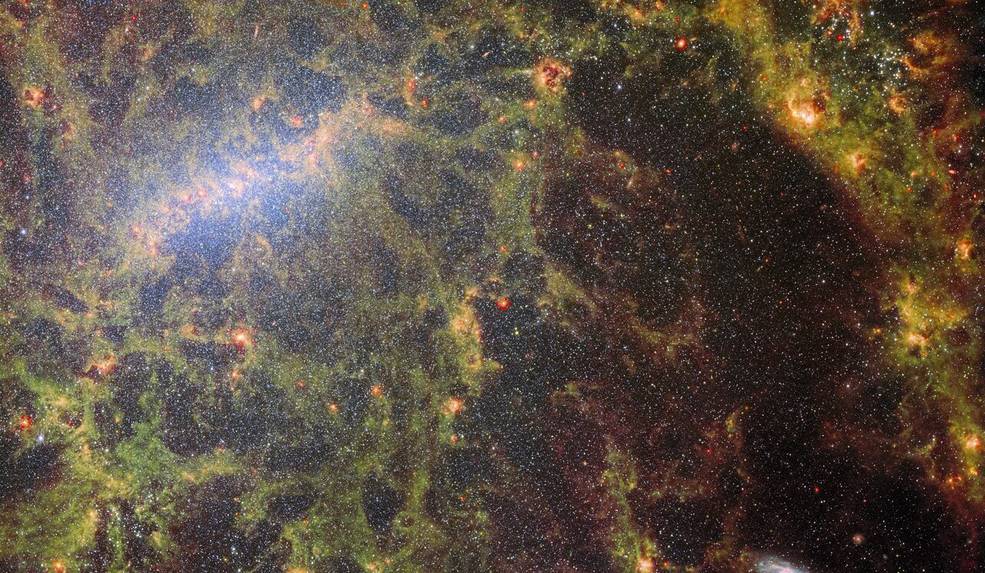The James Webb Space Telescope (JWST) has captured a mesmerizing composite image that showcases the beauty of the barred spiral galaxy NGC 5068. Located approximately 20 million light-years away in the Virgo constellation, NGC 5068 is a stellar system filled with celestial wonders. NASA Administrator Bill Nelson unveiled a captivating image during an event with students at the Copernicus Science Centre in Warsaw, Poland.
The JWST benefits from being able to see through gas and space dust that blocks light
The image is part of JWST’s ambitious campaign to study star formation in nearby galaxies and create a valuable repository of observations. By focusing on NGC 5068’s central regions, where stars are born in abundance, astronomers hope to make significant scientific advancements with the help of JWST’s initial data.

JWST’s observations complement previous studies conducted by other telescopes, including the Hubble Space Telescope, the Very Large Telescope (VLT), and the Atacama Large Millimeter/submillimeter Array (ALMA). By combining JWST’s images of 19 nearby star-forming galaxies with data from these telescopes, astronomers gain a comprehensive understanding of the processes involved in star formation.
One of JWST’s key advantages is its ability to see through the gas and dust that obscures visible light. With its Mid-Infrared Instrument (MIRI) and Near-Infrared Camera (NIRCam), JWST can penetrate the dusty environment of NGC 5068, providing a unique perspective on the star formation process. The composite image presented combines the capabilities of these two instruments, offering a rare glimpse into the composition of NGC 5068.
The image reveals NGC 5068’s intricate spiral structure adorned with glowing bubbles of gas and newly formed star clusters. Additionally, three asteroid trails are visible as tiny dots, a result of their closer proximity to the telescope compared to the distant galaxy. The trails appear slightly different in each frame due to JWST’s multiple exposures, highlighting their transient nature.
In another image taken with JWST’s NIRCam instrument, NGC 5068 showcases a wealth of stars concentrated along its central bar. The image also captures the red glow of gas clouds illuminated by young stars. NIRCam’s near-infrared vision allows astronomers to penetrate the galaxy’s dusty environment and study its massive population. Notably, dense and luminous dust clouds known as H II regions are seen along the spiral arms, where new stars are born. The energetic young stars within these regions ionize the surrounding hydrogen, creating a striking red glow.
Scientists believe that NGC 5068 holds the key to understanding the processes of cosmic creation. JWST’s remarkable capabilities continue to amaze us, providing invaluable insights into the birth of stars. Quite recently, the JWST helped us gaze through Fomalhaut, a whole star system full of new surprises. As the telescope continues its mission, we eagerly anticipate a lot more key discoveries in the near future.
RELATED:
- Fomalhaut, A Star System Full of Surprises and Secrets Revealed by the JWST
- NASA Discovers Crash Site of Japan’s Failed Lunar Lander
- Best Designed Smartphones of 2023
(Source)







